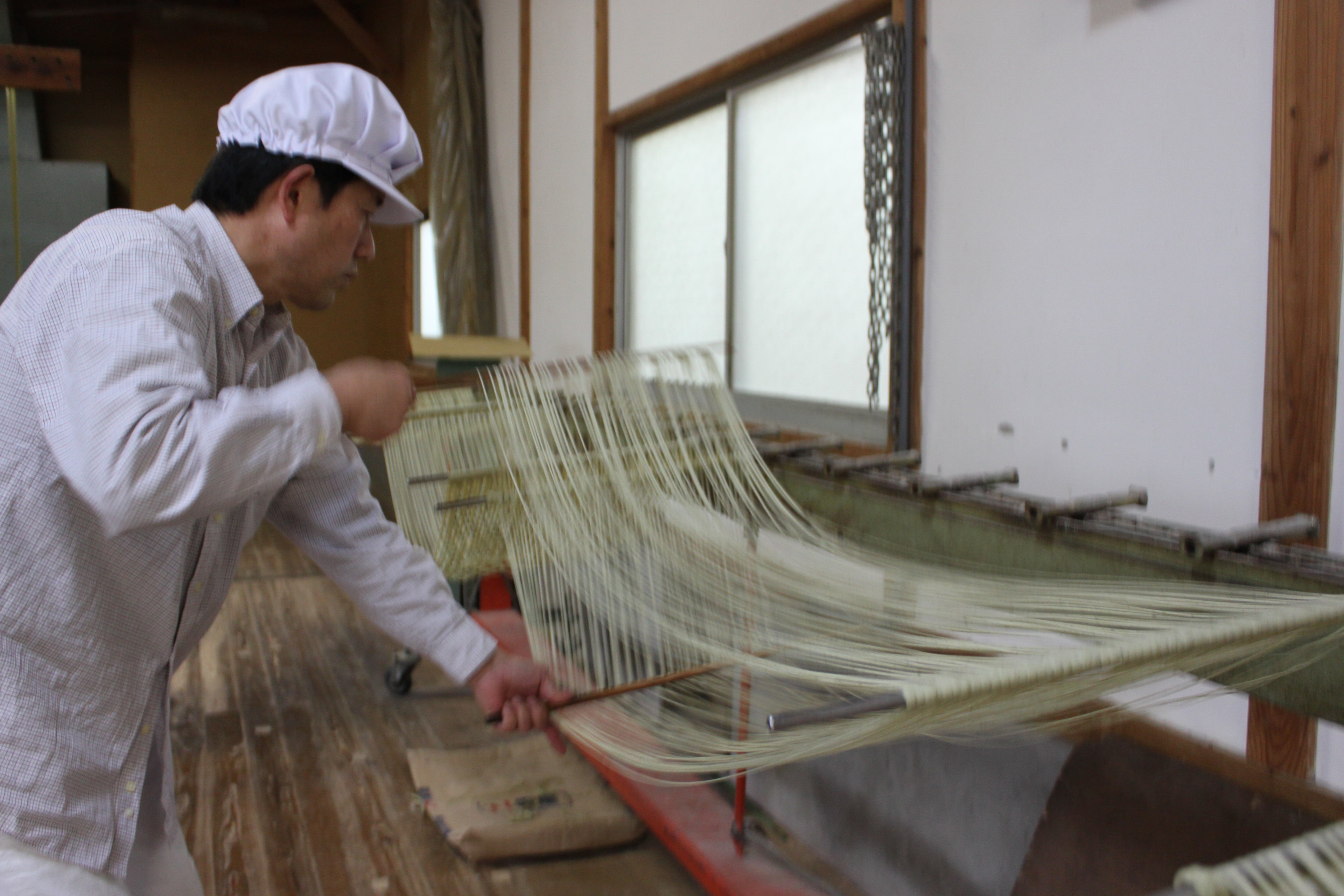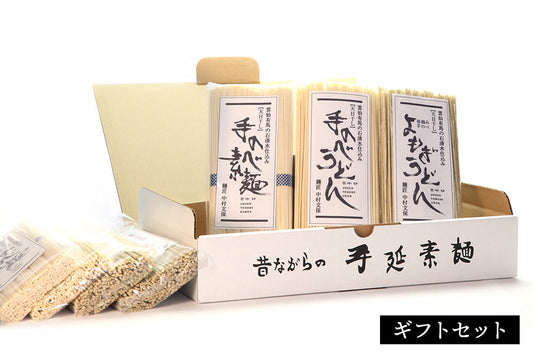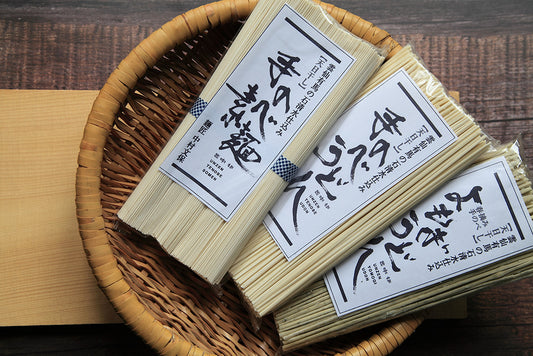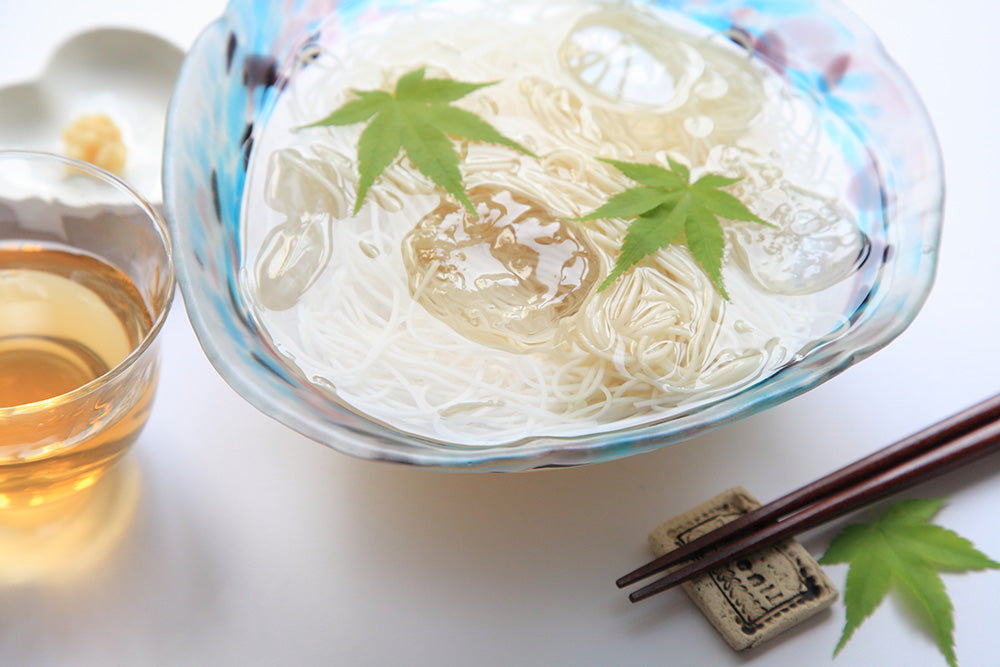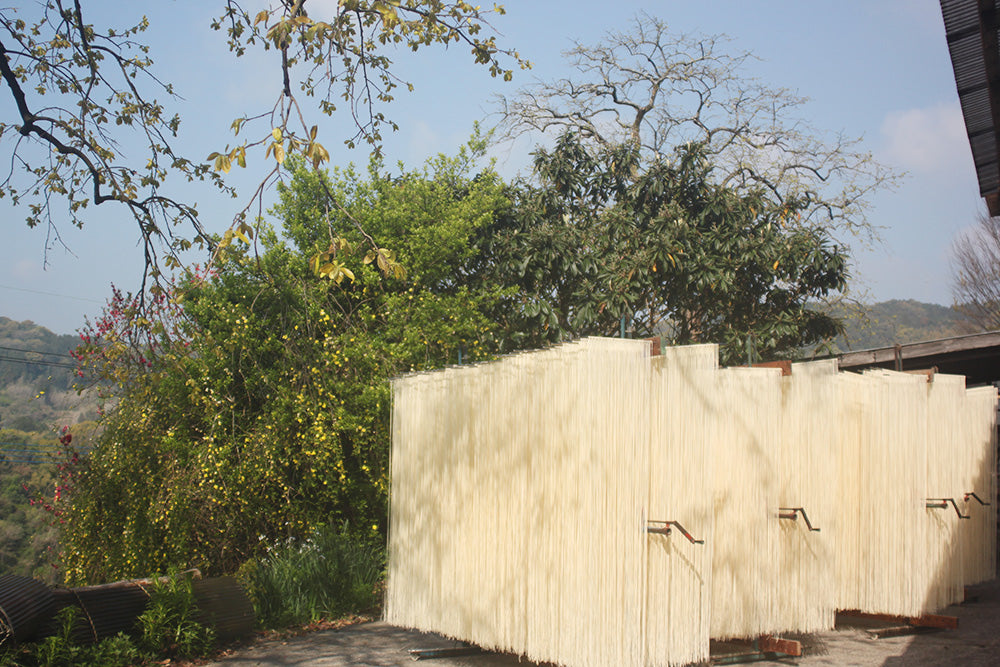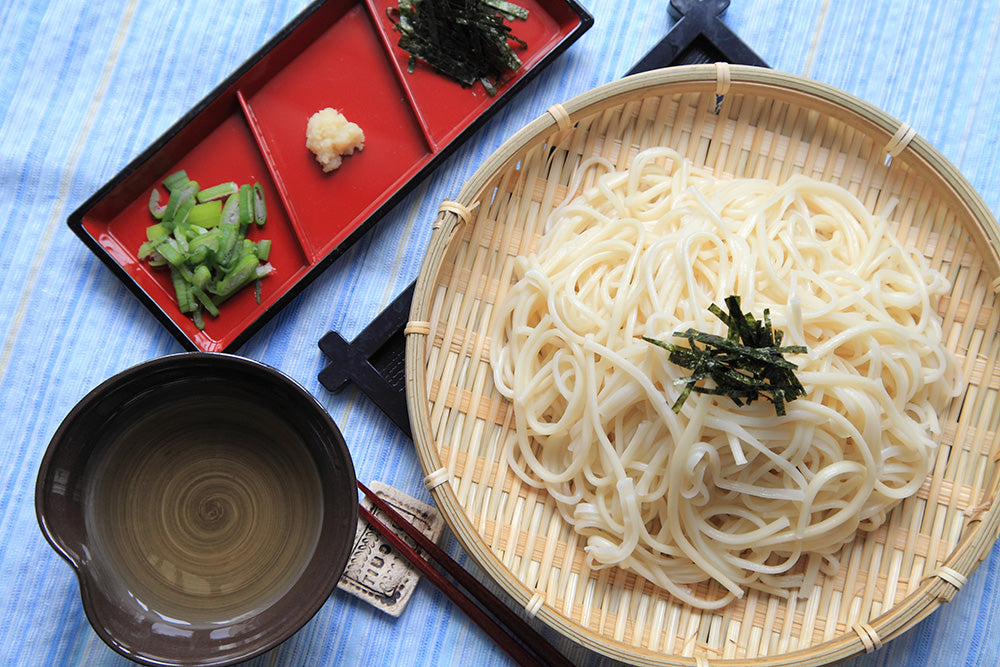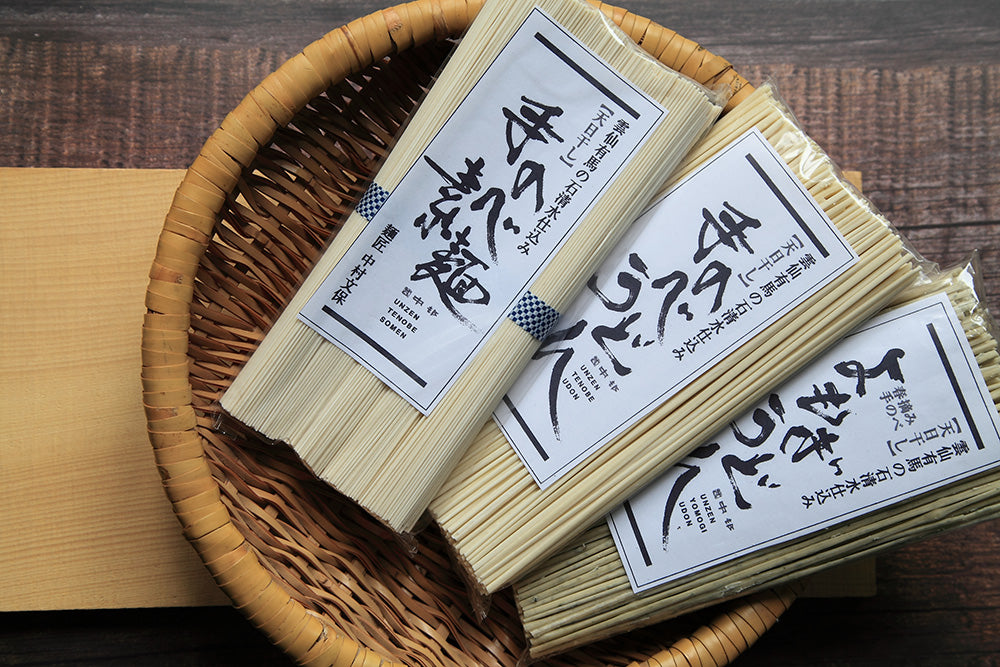
原材料と伝統の技法にこだわった手延べ麺
島原は良質な水と気候に恵まれ、手延べ麺の名産地として知られています。
中邨では、厳選した北海道産小麦粉・モンゴル天外天の塩・雲仙岳の石清水だけを原料に、風味豊かな味を引き出しています。職人技と熟成によるコシの強さとうまみが特徴です。
ぜひ香り豊かな味をお楽しみください。
Hand-pulled noodles made using only the finest ingredients and traditional techniques
Shimabara is blessed with high-quality water and climate, and is known for its hand-pulled noodles. Nakamura uses only carefully selected Hokkaido flour, Mongolian salt, and stone water from Mt. The strong texture and umami taste are the result of craftsmanship and maturation. We hope you enjoy the aromatic flavor.
-
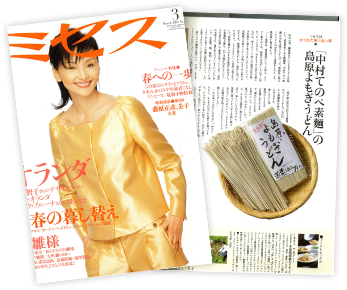
-
雑誌『ミセス』2007年3月号「かくれた味うまい味」で紹介されました
手延べよもぎうどんをご紹介いただきました。
島原は環境に恵まれた手延べ麺の名所です。島原の乱の後に小豆島から伝わりました。
いっぽうよもぎを練り込むのは中邨が元祖です。早春の香りをお楽しみください。
製造方法のこだわり
中邨の麺は早朝よりこね始めてから、丸2日間かけて作ります。麺をのべ終わると屋外での天日乾燥、そして屋内での冷風乾燥と2段階に分けて、じっくり乾燥させます。翌朝までゴムを張らせたような状態で熟成することにより、コシの強さとうまみを引き出すのです。手間と暇を惜しまない製法を、今も続けています。
100%国産小麦粉の香り豊かな味を楽しんでいただくために、おそばのようなできるだけシンプルな食べ方をおすすめします。茹で上げたお湯も、そば湯のように飲める造り方、即ちでんぷんを全く使用しない製法を中邨は行なっています。
Commitment to Noodle Manufacturing Methods
The best time to produce noodles is from fall to winter. The rest of the year is closed. Nakamura's noodles are kneaded early in the morning, and it takes two full days to complete the process. Once the noodles are finished, they are dried slowly in two stages: sun-drying outdoors and cold-air drying indoors. The noodles are left to mature in a rubbery state until the next morning, which brings out their firmness and flavor. This process, which requires a great deal of time and effort, continues to be used today.
To enjoy the aromatic flavor of 100% domestic flour, I recommend eating it as simply as possible, like soba noodles. Nakamura uses a method that allows the boiled water to be drunk like soba-yu (buckwheat water), i.e., without using any starch.
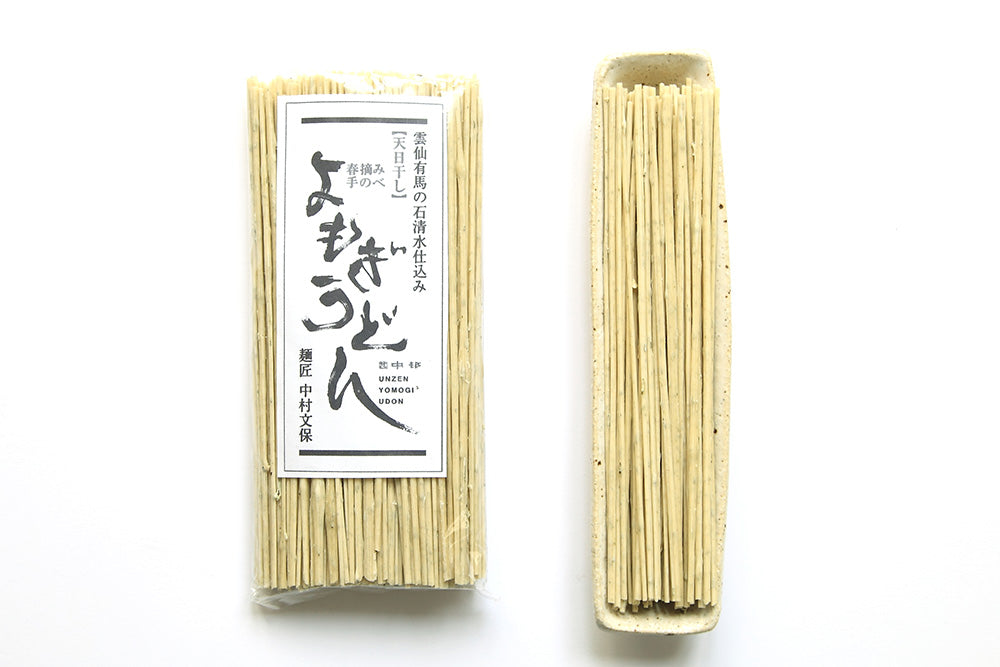
よもぎうどん
婦人誌ミセスの2007年3月号「かくれた味、うまい味」に掲載いただいてから、今も幅広い年代に長く愛されています。
「よもぎうどん」は中邨が元祖。4月初旬頃までのよもぎの若葉だけを摘んで湯通し、アク抜きをした後、ペースト状にして小麦粉に練り込む麺づくりは、根気のいる作業です。
着色料や香料が全く入っていない、安心な薬草麺です。茹でたときのほのかな香りは、自然そのものです。心と体をリラックスさせるとされるよもぎの効果をお楽しみください。
Mugwort Udon Noodles
Since being featured in the March 2007 issue of "Mrs.", a Japanese women's magazine, in the article "Hidden Tastes, Delicious Tastes", it has been a long-time favorite among people of all ages.
Yomogi Udon was originally produced in Nakamura, where only young mugwort leaves are picked until early April, blanched, and then kneaded into flour to make a paste, a laborious process.
These herb noodles contain no coloring or flavoring and are safe to eat. The subtle aroma of the noodles, when they are boiled, is a natural taste of nature itself. Enjoy the effects of mugwort, which is believed to relax the mind and body.
中邨の手延べ麺
-
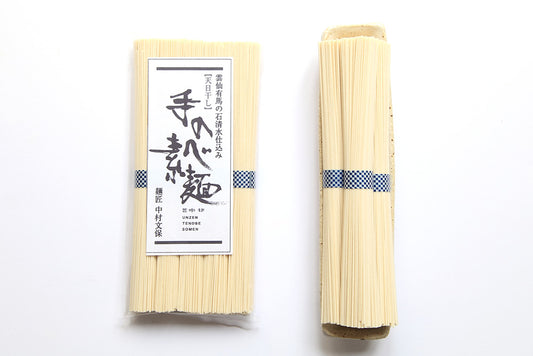
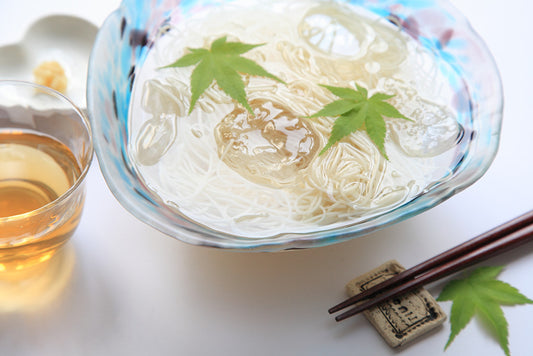 売り切れ
売り切れ手延べそうめん 一袋250g
通常価格 ¥454通常価格単価 あたり -
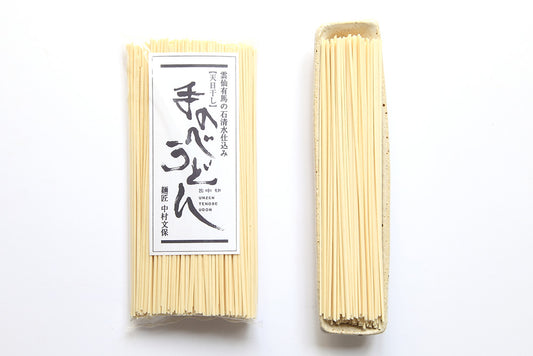
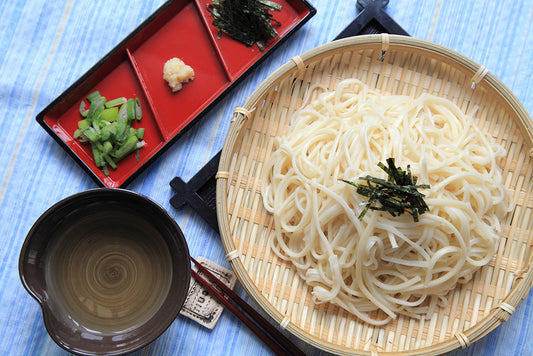 売り切れ
売り切れ手延べうどん 一袋250g
通常価格 ¥454通常価格単価 あたり -
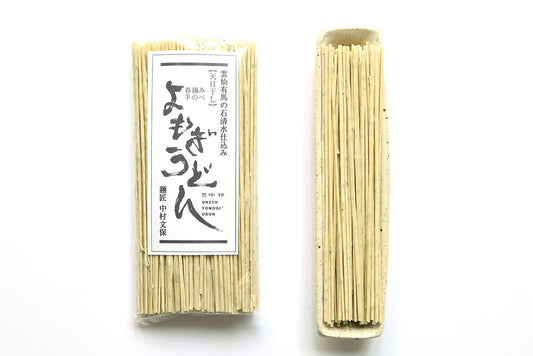
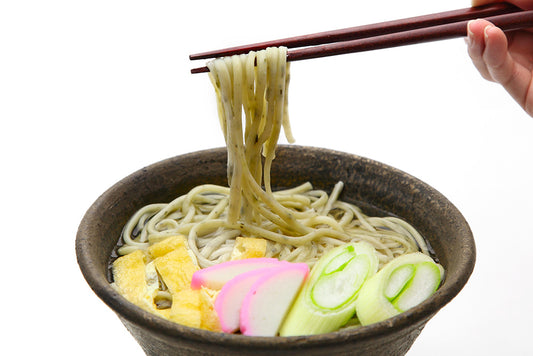 売り切れ
売り切れ手延べよもぎうどん 一袋250g
通常価格 ¥508通常価格単価 あたり -
<ギフトセット>手延べ そうめん + うどん + よもぎうどん
通常価格 ¥3,337 から通常価格単価 あたり
原材料 Carefully selected raw ingredients
-
小麦粉 Wheat flour
北海道産小麦の中でも、香りが豊かな品種の最高峰を選んで特別に取寄せています。麺用の小麦粉はパン用と異なり、新鮮さを必要とします。
We select and specially order the best of the most aromatic varieties of wheat grown in Hokkaido. Flour for noodles, unlike that for bread, requires freshness.
-
塩 Salt
海洋汚染とは全く無縁の、太古の海の成分が結晶化した岩塩・モンゴルの天外天の塩を100%使用しています。えぐみの元となるニガリ(塩化マグネシウム)が極めて少なく、美味しさを感じさせるカルシウムが多いため、ほのかな甘みとすっきりとした味となります。水にスーッと溶けるので、国産小麦粉と共にこねるときにも浸透性の良さが感じられます。
I use 100% Mongolian Tengai-ten salt, which is rock salt crystallized from ancient sea ingredients, completely unrelated to marine pollution. It contains very little magnesium chloride, which is the source of bitterness, and a lot of calcium, which gives it a delicious taste, resulting in a subtle sweetness and a clean, refreshing flavor. It is easily soluble in water, so you can feel its good permeability when kneading it with Japanese flour.
-
水 Water
雲仙岳のふもと、この南島原有馬地方はほたるの里とも言われ、きれいな湧水の多いところです。そのやわらかい水は、コーヒやお茶に最適と評判の名水ですが、さらに石清水を求めて自ら麺づくりのために水を汲みに出かけます。
At the foot of Mt. Unzen, the Minami-Shimabara Arima region is also known as the "home of fireflies" and is home to many clean springs. The soft water is well known as the best water for coffee and tea. In addition, I go out to fetch water for noodle making myself, seeking the cool, clear water that comes out of the rocks.
